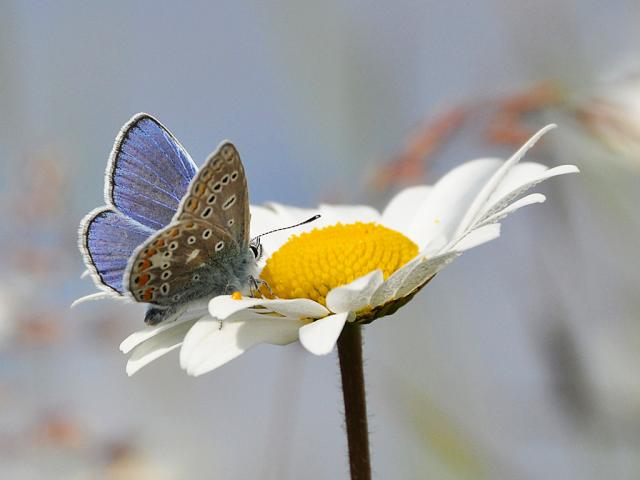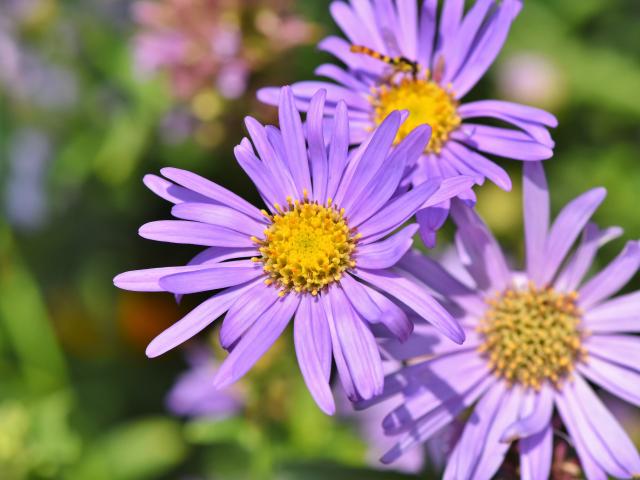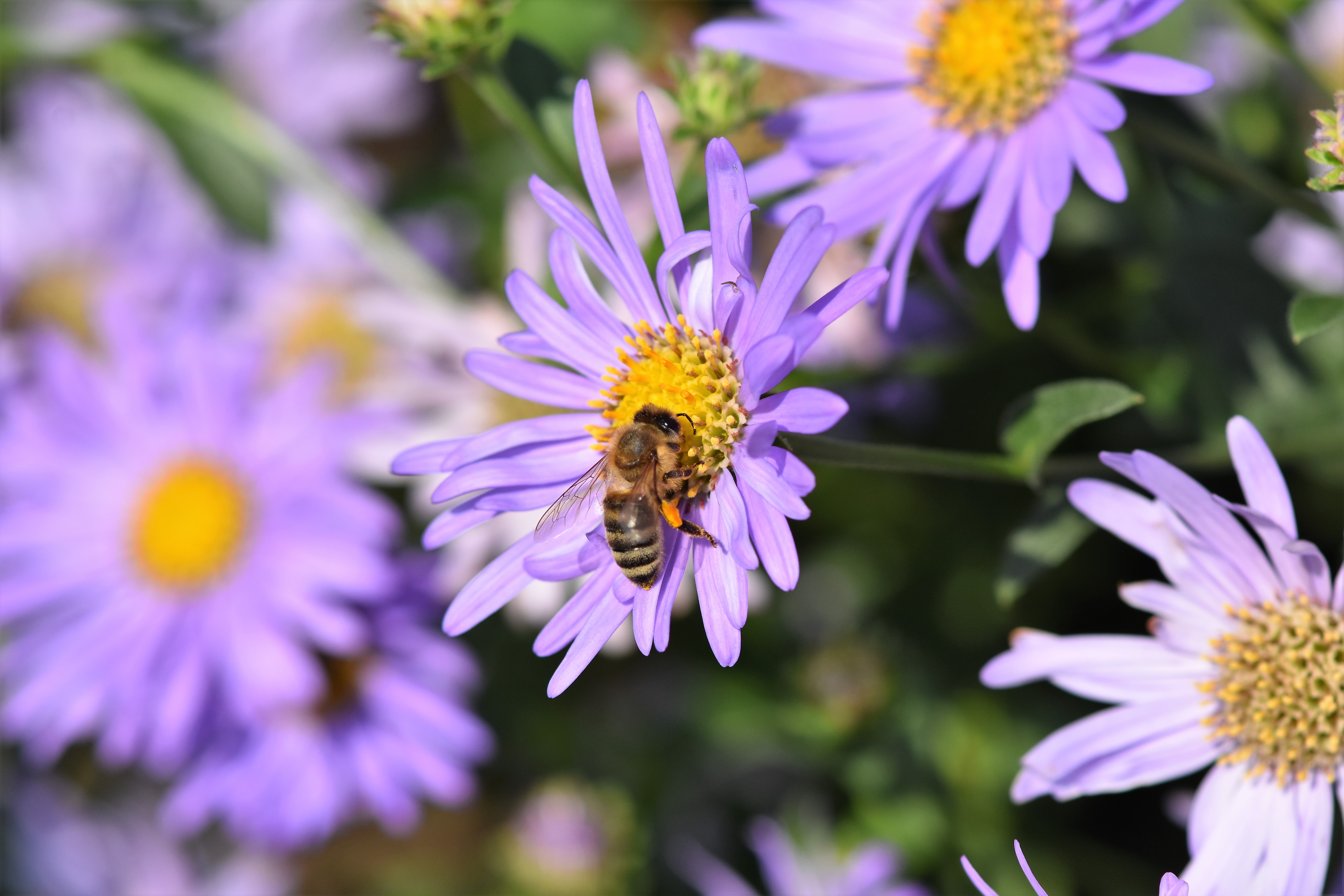Michaelmas-daisies are one of the stars of the autumn flowerbed. These pretty perennials have daisy flowers of pink, mauve, lilac, purple and white with yellow centres, which are a good source of nectar for butterflies – such as the Red Admiral - when other plants are starting to fade.
The flowers are known as Michaelmas-daisies as they grow at the time of the Christian festival of Michaelmas on 29 September. This is also known as the Feast of St Michael and All Angels, when St Michael is celebrated along with three other archangels – Gabriel, Uriel and Raphael. Michael is considered the greatest of all the Archangels and is honoured for defeating the devil. This is celebrated in a rhyme: “The Michaelmas-daisies, among dead weeds, Bloom for St Michael’s valorous deeds. And seems the last of flowers that stood, Till the feast of St. Simon and St. Jude.” (28 Oct)
Michaelmas falls near the equinox (on 22 Sep this year), when night and day are roughly equal length, so it is associated with the beginning of autumn and shorter days and longer nights. The celebration invokes Archangel Michael’s protection for the dark days ahead.
Michaelmas-daisies will also brighten your garden through September and October. They belong to the Asteraceae family and the name Aster comes from an Ancient Greek word meaning ‘star’, which refers to the shape of the flower head. Most of the popular Michaelmas-daisy cultivars come from species native to North America. Far fewer are derived from species of European and Asiatic origins.
They were first introduced into this country from North America at the start of the 18th century. They have since spread and are widely naturalised. Two

of the main species are the New England Aster or Hairy Michaelmas-daisy Symphyotrichum novae-angliae and the New York Aster or Confused Michaelmas-daisy Symphyotrichum novi-belgii
Over recent years there have been many reclassifications within the Aster genus due to new genetic evidence. This has resulted in changes to scientific names – for example from Aster novae-angliae to the tricky sounding Symphyotrichum novae-angliae.
Asters can be prone to powdery mildew but New England Asters are mildew resistant. There are around 50 varieties of New England Asters currently available and generally the plants form clumps of tall upright stems between 90cm and 180cm tall. Here is a small selection:
‘Andenken an Alma Potschke’ - deep rose pink, 90cm
‘Barr’s Pink’ - large lilac-pink flowers, 150cm
‘Harrington’s Pink’ - rose-pink flowers, 120cm
‘Helen Picton’ - large, rich violet-purple flowers, 120cm
‘Rosa Sieger’ - light rose-pink, 120 cm
‘September Ruby’ - dark pink, 130 cm
‘Violetta’ - deep violet flowers, 130cm
These Michaelmas-daisies generally prefer a sunny position with moisture-retentive but well-drained soil. Mulching can help to retain moisture.

Deadhead the plants to prevent self-seeding. To maintain the health of the plants, every few years the clumps need lifting, splitting and replanting in the spring just as the shoots are appearing.
Michaelmas marks the harvest and the end of a growing cycle of the year but also new beginnings. Make the most of your fresh start, cheered along by vibrant flowers and grateful butterflies.
Happy Gardening!
The Secret Gardener
Images: Asters (Steve Maskell), Red Admiral (Tim Melling), Small Tortoiseshell, Red Admiral and Peacock on Aster (Maureen Rush).


